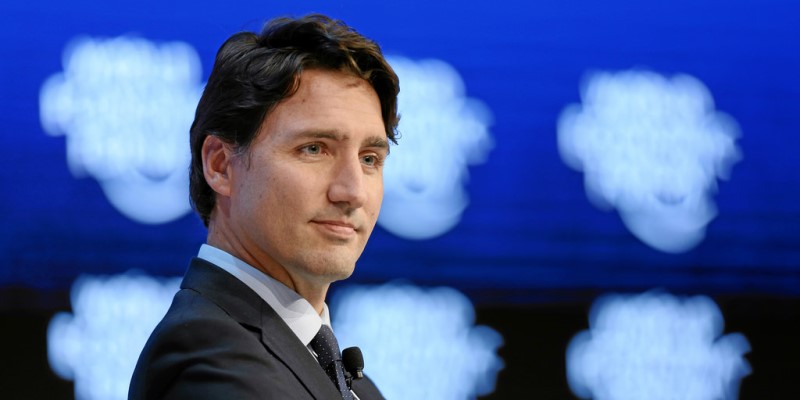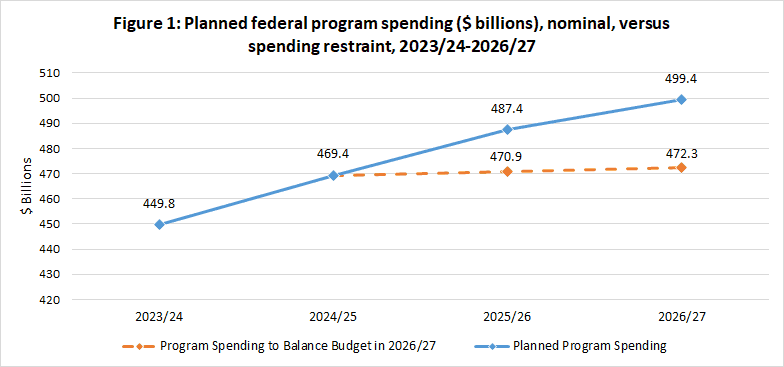Balanced budget within reach—if Ottawa restrains spending

The Trudeau government will table its next budget on April 16. Federal finances have deteriorated in recent years due to the Trudeau government’s string of budget deficits, and high spending has led to a significant amount of debt accumulation, which imposes costs on current and future generations. Yet if the government presents a plan in Budget 2024 to rein in spending growth, it could balance the budget in two years.
Far from its promise to balance the budget by 2019, the Trudeau government has instead run nine consecutive deficits during its time in office. And it doesn’t intend to stop, with annual deficits exceeding $18 billion planned for the next five years.
The root cause of these deficits is the government’s inability to restrain spending. Since 2014/15, annual program spending (total spending minus debt interest) has increased $193.6 billion—or 75.5 per cent. If we control for population growth and inflation, this represents an extra $2,330 per person.
This level of debt-financed spending has contributed to an estimated $941.9 billion increase in gross federal debt from 2014/15 to 2023/24. In other words, partly due to its spending habits, nearly one in every two dollars of debt currently held by the federal government has been accumulated under Prime Minister Trudeau. Debt accumulation will only continue barring a change in course, as the federal government is expected to add another $476.9 billion in gross debt over the next five years.
Simply put, the Trudeau government’s approach towards federal finances has been characterized by high spending, large deficits and significant debt accumulation.
This approach to fiscal policy is concerning. Growing government debt leads to higher debt interest costs, all else equal, which eat up taxpayer dollars that could otherwise have provided services or tax relief for Canadians. And these costs are not trivial. For example, in 2023/24 the federal government is expected to spend more to service its debt ($46.5 billion) than on child-care benefits ($31.2 billion).
Accumulating debt today also increases the tax burden on future generations of Canadians—who are ultimately responsible for paying off this debt. Research suggests this effect could be disproportionate, with future generations needing to pay back a dollar borrowed today with more than one dollar in future taxes.
Although the Trudeau government promises more of the same for the coming years, this need not be the case. Instead, a recent study shows the federal government could balance the budget in two years if it slows spending growth starting in 2024/25. The following figures highlight this approach. The first chart below displays currently planned federal program spending from 2023/24 to 2026/27, compared with the spending path that will balance the budget, while the second chart shows the resulting budgetary balances.
As shown by the first chart, to balance the budget by 2026/27 the federal government must limit annual spending growth to 0.3 per cent for two years. As a result, annual nominal program spending would rise from $469.4 billion in 2024/25 to $472.3 billion in 2026/27. For comparison, the Trudeau government currently plans to increase annual spending up to $499.4 billion during that same period.
Should the government implement this level of spending restraint, the federal deficit would shrink to $21.8 billion in 2025/26 (as opposed to $38.3 billion), and the budget would be balanced by 2026/27 (as opposed to a $27.1 billion deficit). All told, by slowing spending growth to balance the budget, the federal government would avoid accumulating significant debt. Moreover, this also sets the government up to return to budget surpluses in the following years, which could be used to start chipping away at the mountain of federal debt already on the books.
Rather than continue its current approach to fiscal policy, and risk needing to employ more drastic cuts in the future, the Trudeau government should implement modest spending restraint now and balance the budget.
Authors:
Subscribe to the Fraser Institute
Get the latest news from the Fraser Institute on the latest research studies, news and events.



